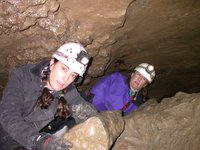
Making art, historically, has been separated from the market psycologically for most people. Art needs to be above commerce, in order to be independent from the drives of the economy. That is the conventional wisdom we continue to propogate. This is not unlike the university system which created an ivory tower for intellectuals who could further research without the pressures of the market and most importantly, remaining "pure", beyond the reach of "corruptive, money related influence" (quotation marks mine). Pure research, pure art. I no longer believe in this mythology.
I argue these days are past. The university system is more and more influenced by big business doners, vividly demonstrated by the
UC Berkely Botany controversy that broke in late '04.
The so called art world is big business. Check out these
auction results for recent transactions. My point here and I look forward to comments and furthering this converstion, is that small artist/inventor/entrepreneurial studios and workshops, creating work with an eye to making a living, can and will be a foundational aspect of a mature economy. Speaking as an American, I live in the strongest economy in the world (we'll see for how much longer). As such, many other nations look to us for keys to improving their economic health. We (Americans) are far from exemplars, but we have produced the wealthiest nation in history for the most people. Poverty is still rampant, but more people have more money now that ever before. See
percapita income statistic here (1934-2004).
Money, art, and new discoveries cannot be separated. The integration of these pursuits are the foundations of what has been coined "sustainable" economic development. I am beginning to question the word
sustainable, because sustain means to maintain in perpetuity. Many people in the green revolution have jumped on this word as a catch all for furthering social justice, the triple bottom line, and refocusing developing based on renewable resources. I feel my business model has many sustainable components, except I work with clay. A totally non-renewable resource. Yet there is a ton of it on the planet.
A micro enterprise, small workshop business, or art studio, has the potential to be an important component in the development of the triple bottom line.
Art is an ambiguous word, as is sustainability. A less ambiguous pursuit is to strive toward greater excellence, awake to the perils of environmental degredation and ethical labor use, embracing commerce, not by jumping on every opportunity, but by carefully crafting work that has value, meaning and beauty, and finding an audience for that.






 E. F. Schumacher
E. F. Schumacher








